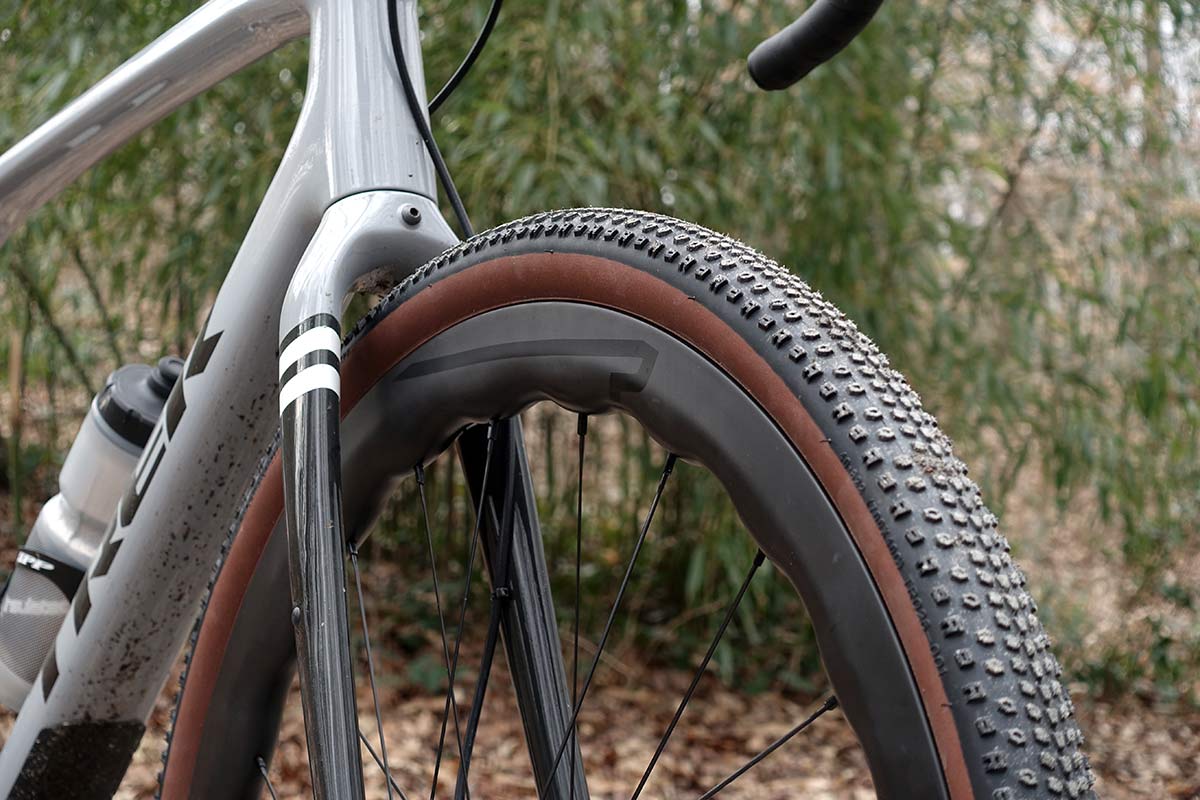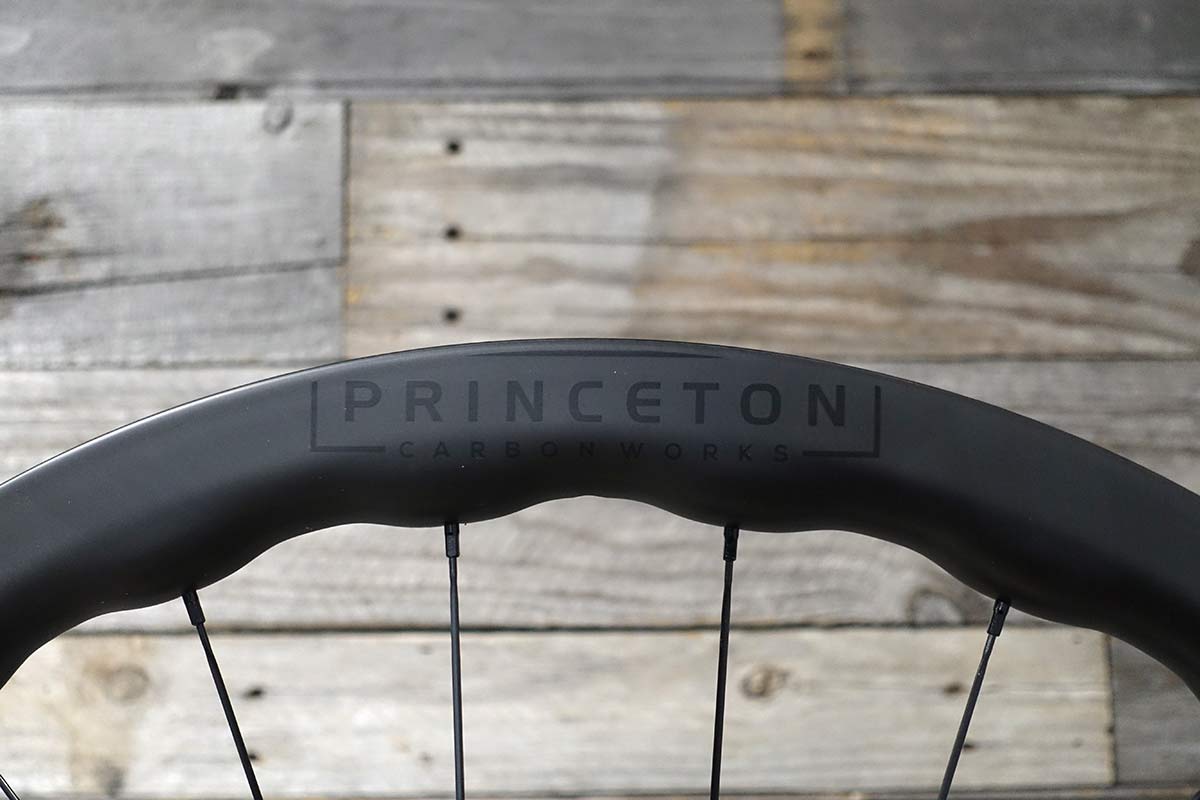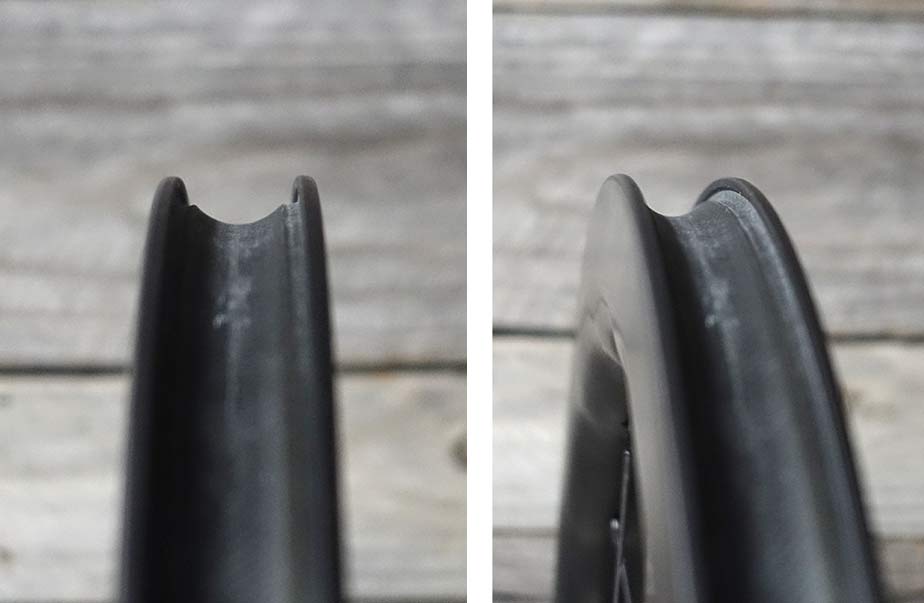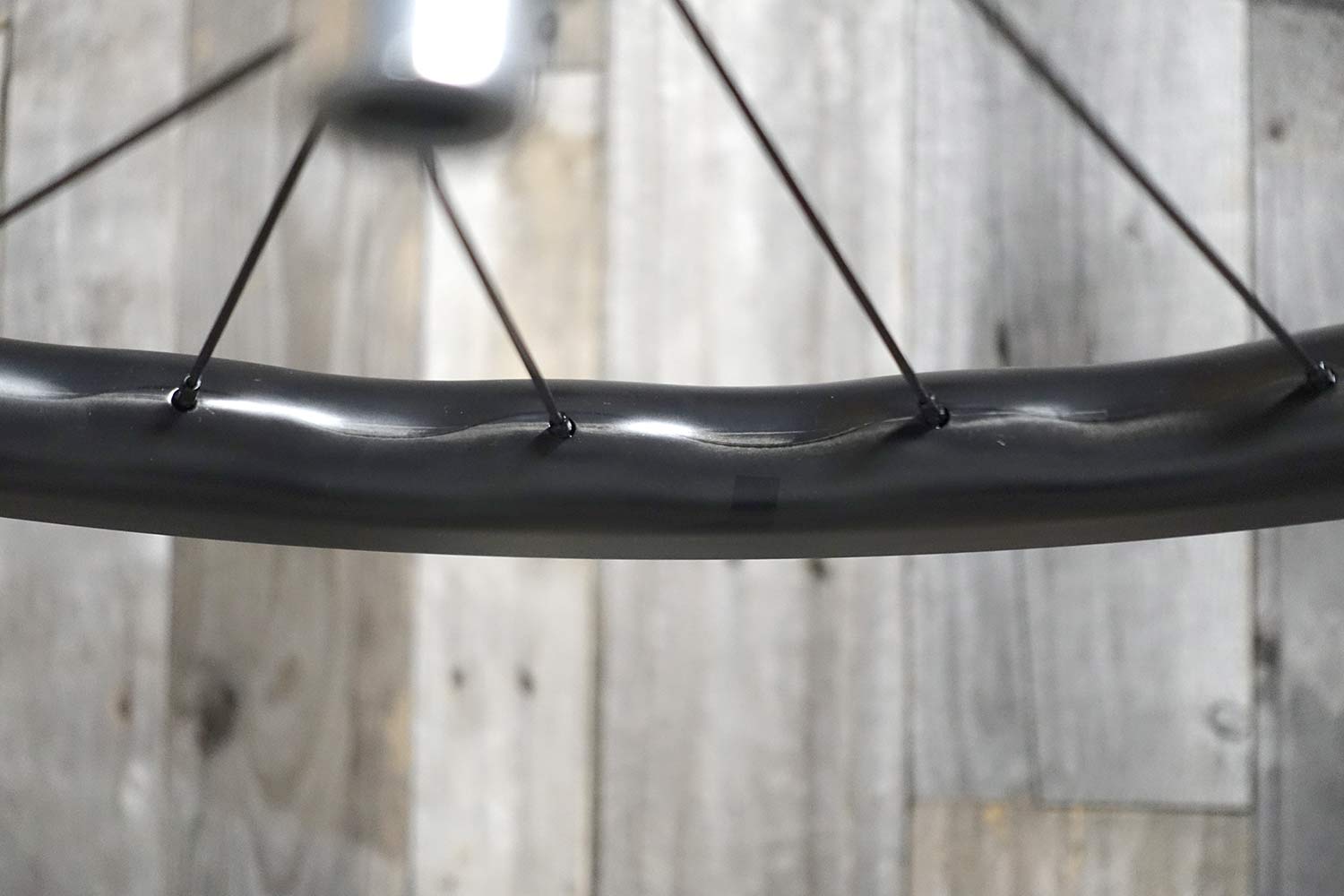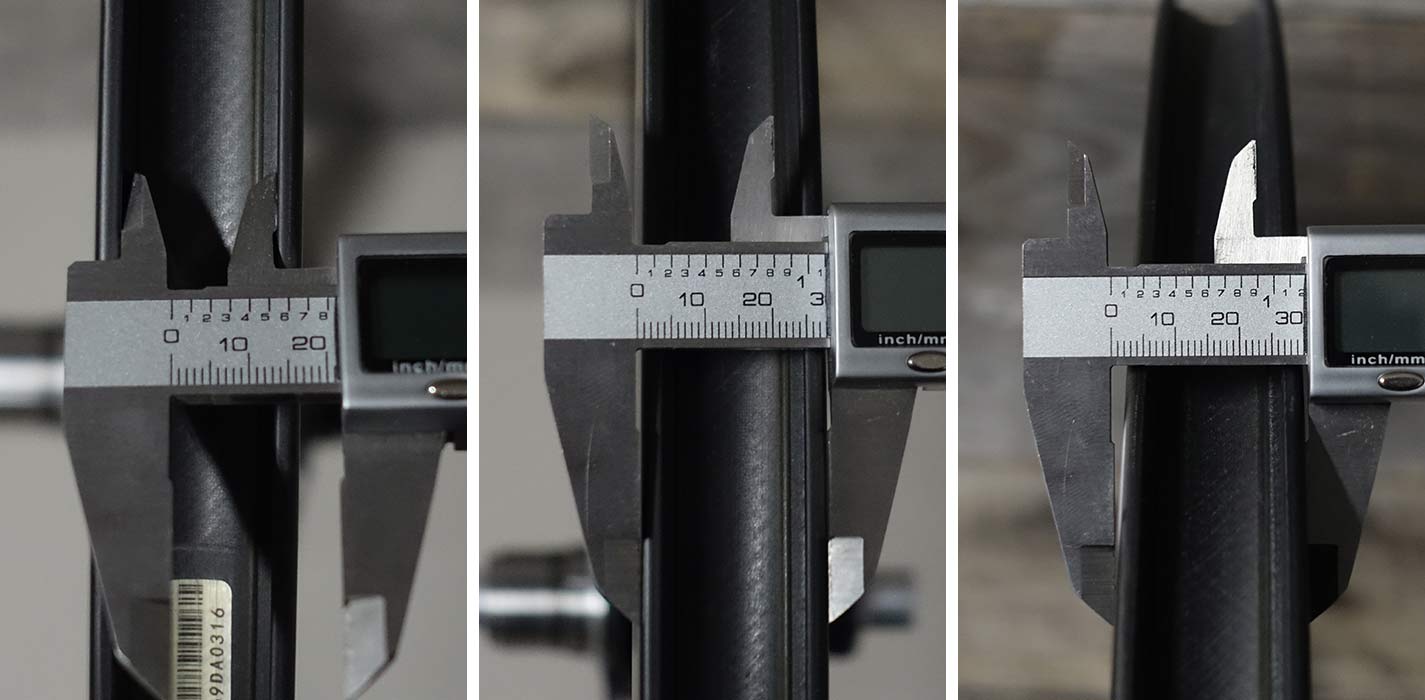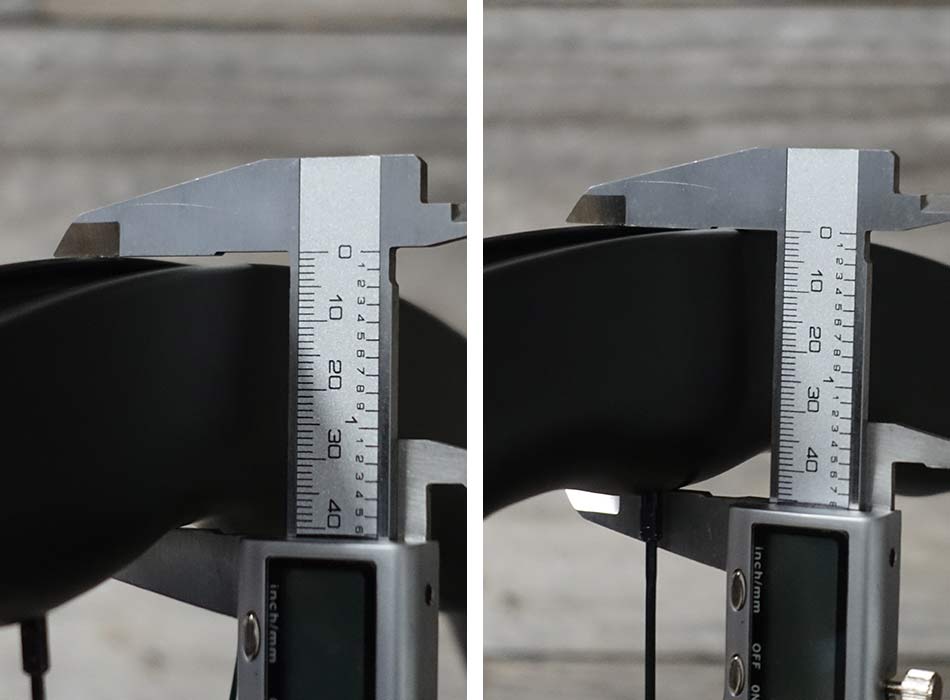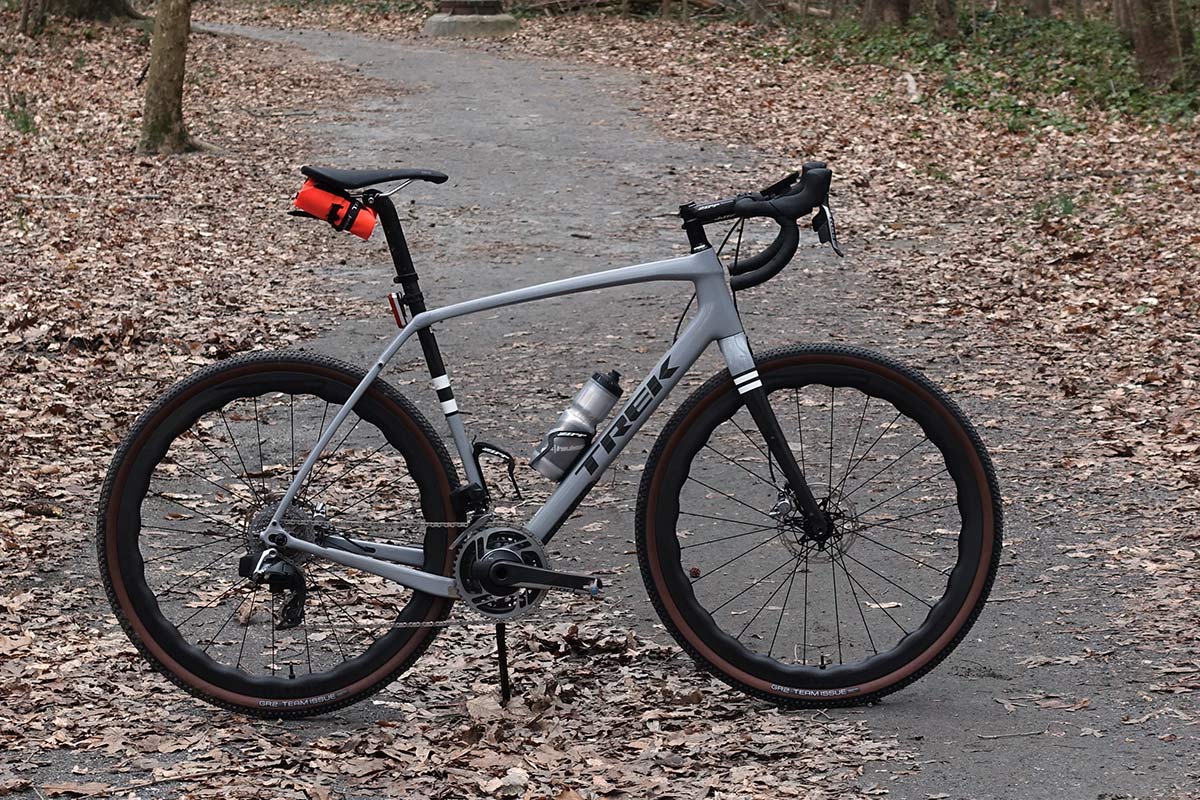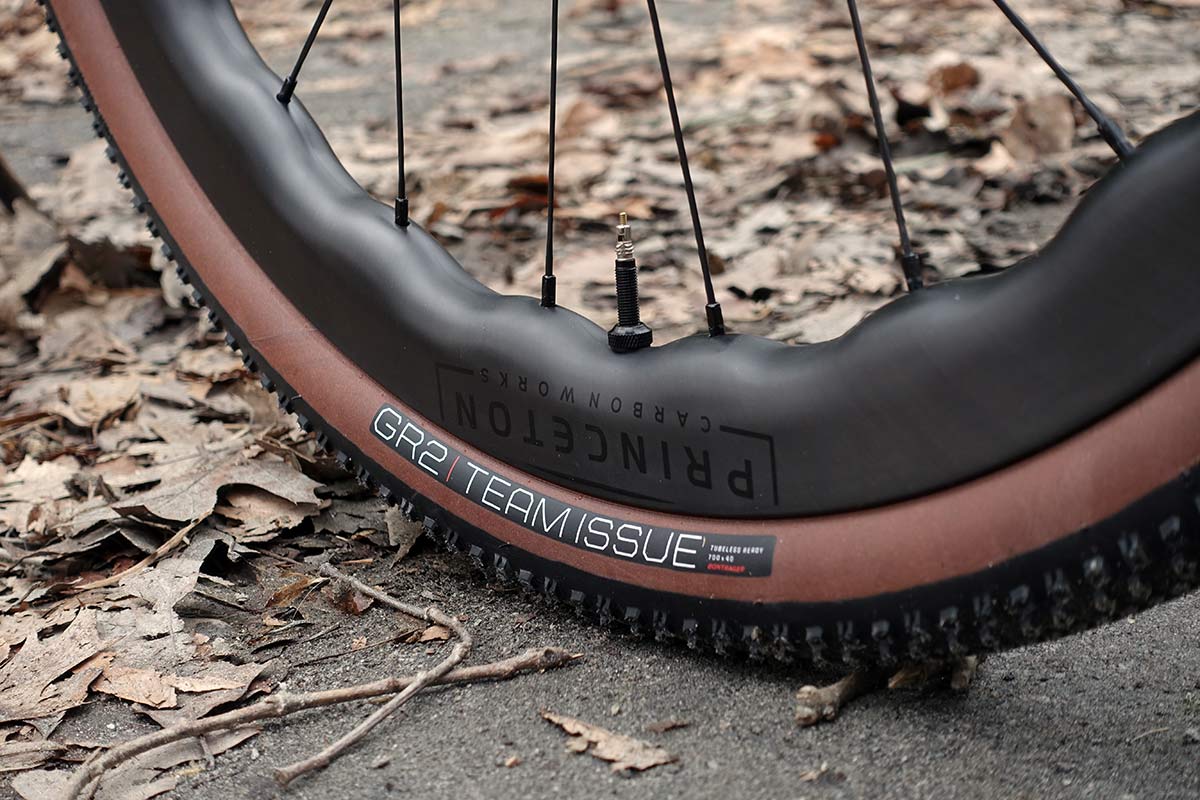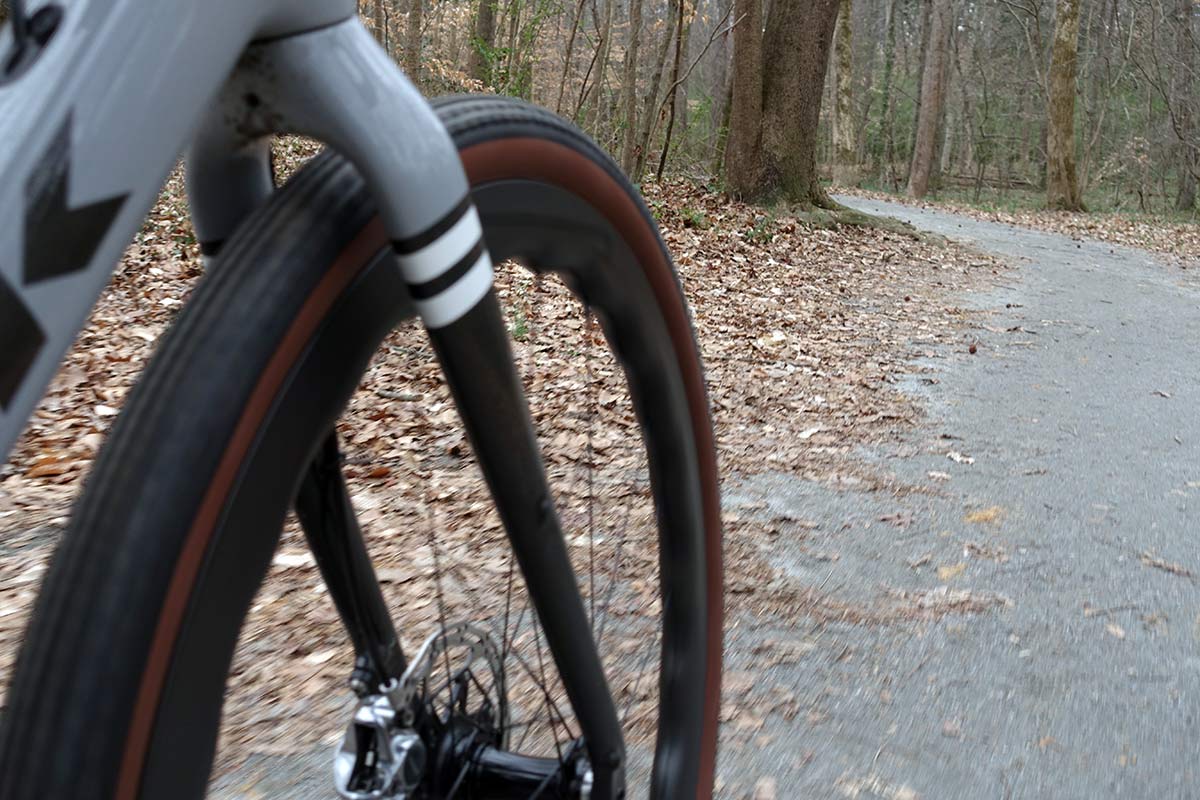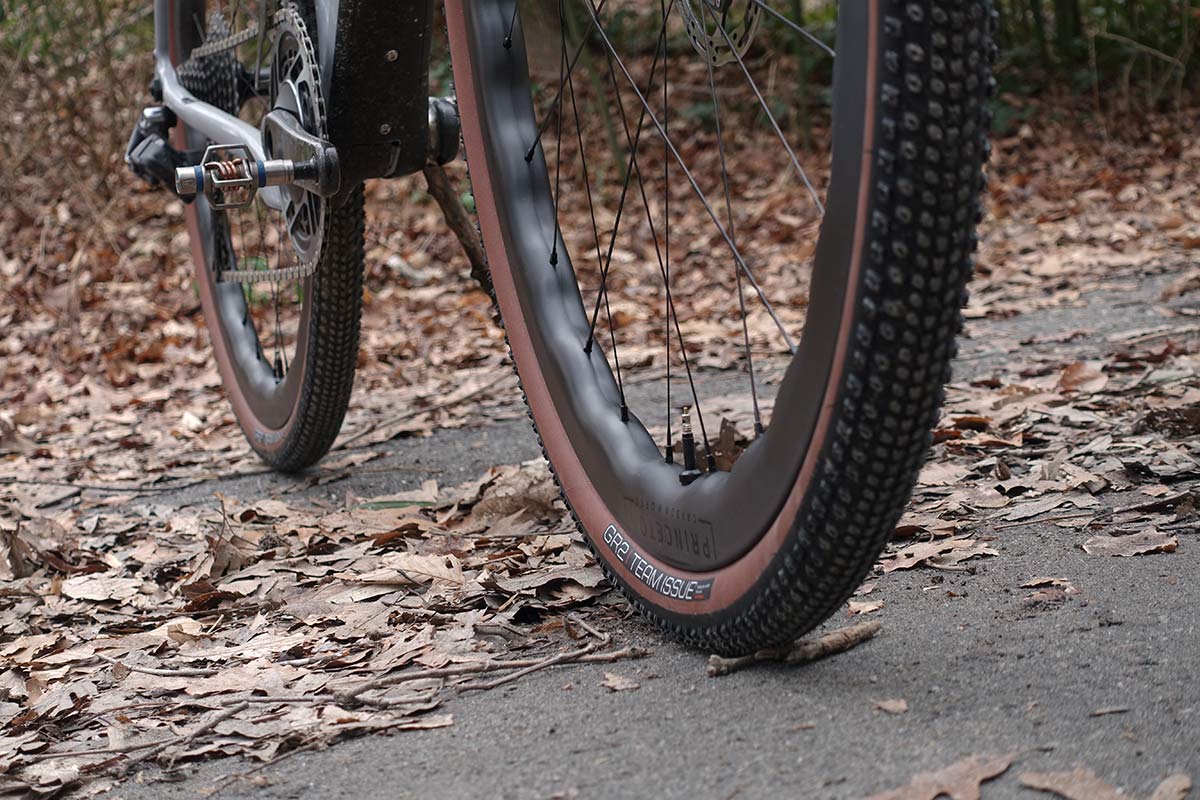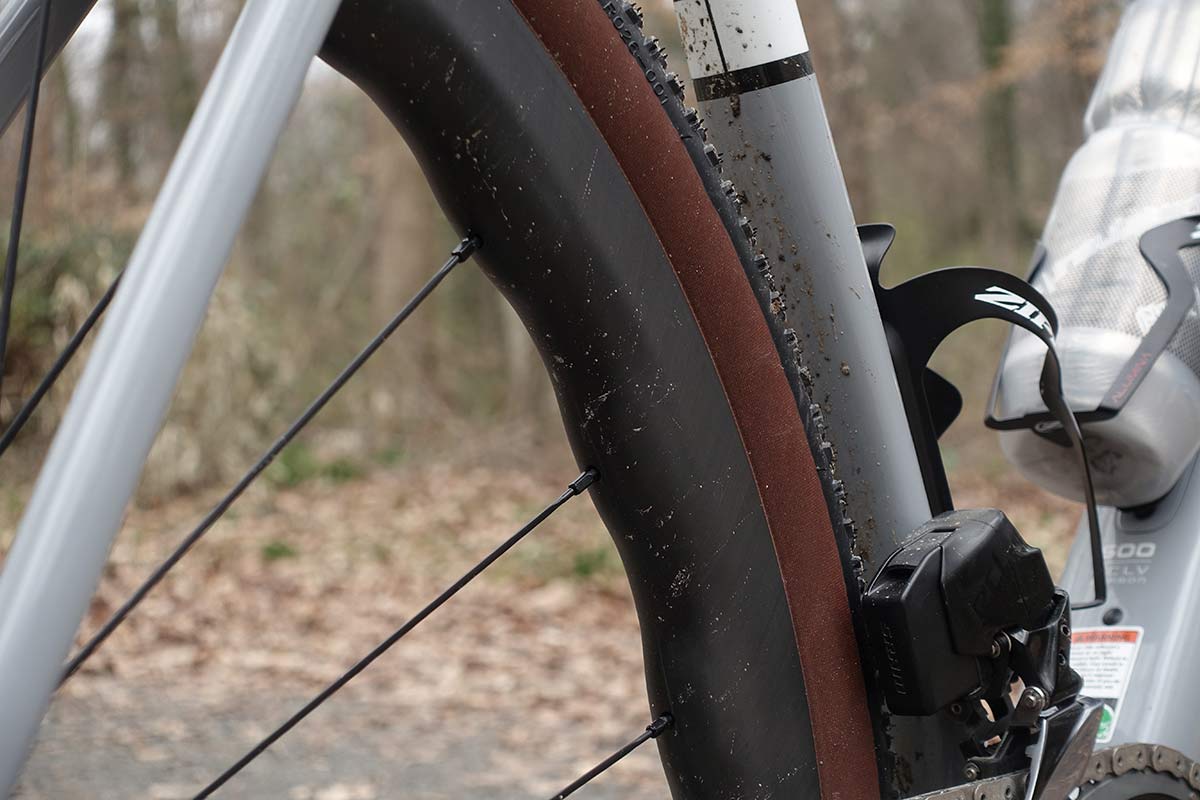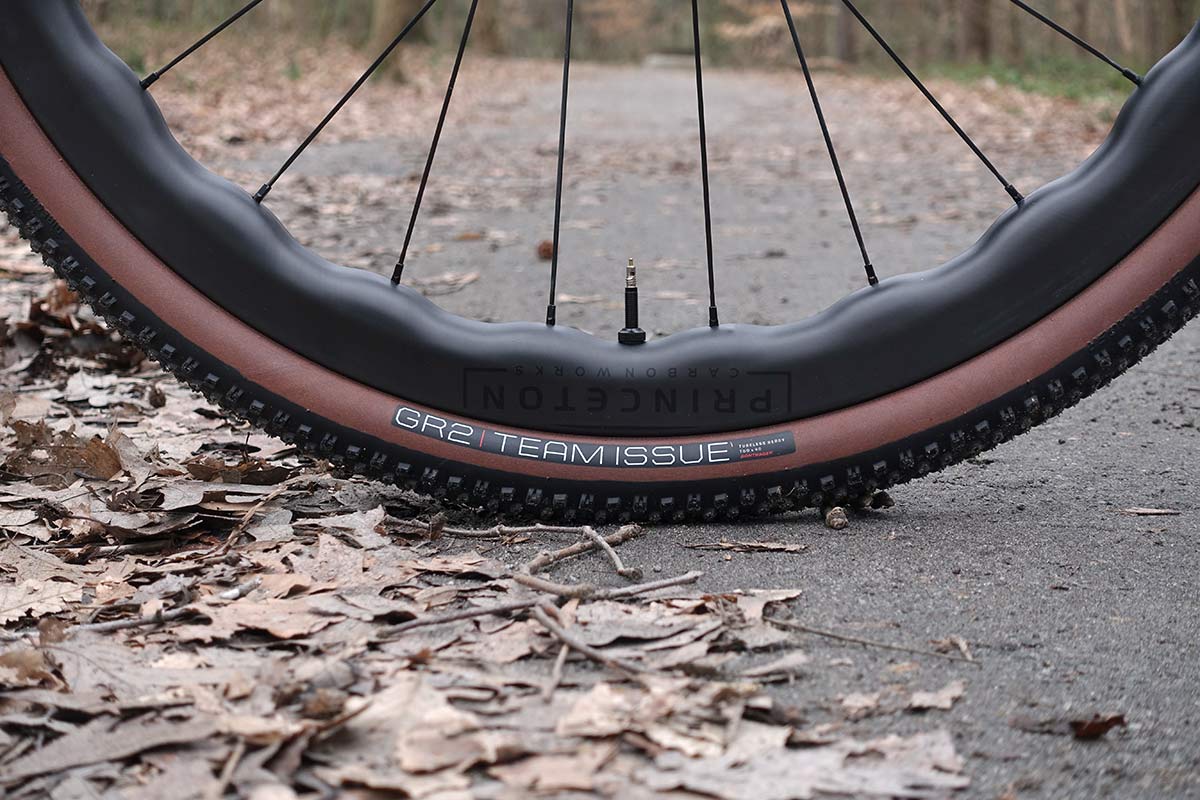Launched in 2018 with a unique sinusoidal wave pattern to their rims, Princeton CarbonWorks claimed better aerodynamics than standard aero rim profiles. Now, they’ve stretched the width and shrunk the depth to create a very quick set of wheels for gravel riders and racers. Aero for gravel, you say? Yep, but there’s other reasons you’ll want the new Princeton CarbonWorks GRIT 4540 wheels…
Why do they have a wave pattern?
Aerodynamics, mainly, but with really good crosswind stability. In fact, it’s the latter that was the real driver behind the design. We tested that theory with their deeper WAKE 6560 road wheels and came away impressed at their ability to hold a line when the wind got nasty. The secret is that the varying depths create different shapes for the wind. So, when one angle might cause a wheel to stall and create a lot of drag, the other depth overcomes that to keep you rolling quickly and drama free.
The other use of the wave pattern is the spoke placement. All of the spokes lace into the deeper part of the rim, and the GRIT rims are ever so slightly asymmetric. The nipples are dropped in through the valve stem’s hole, leaving the rim bed free of all but one drilling. So, easy tubeless setup without tape, but also a stronger rim.
In fact, this structural design is one of the reasons they’re able to claim a (laterally) stiff wheel without adding a lot of weight (scale pics below). But, could the extra shaping make them too stiff and punishing on gravel?
The overall premise seemed to work with a deep-section road set, so we were curious to see how it’d work on a fatter, shallower rim. So we hit the dirt with a set of Bontrager GR2 Team Issue 700×40 tires to see how they’d fair on rougher terrain. But first, let’s weigh ’em…
Actual weights, widths & how to make them lighter
For a wide, somewhat deep set of carbon wheels, the Princeton CarbonWorks GRIT 4540s come in at a very reasonable 1,507g (front is 685g and rear is 822g). Add the included alloy valve stems and you’re at 1,518g. No need for tape or anything else, just add tires. Here’s the bonus…these are built with the impeccably smooth White Industries hubs with XD-R driver body.
These hubs are gorgeous, and roll like a dream, but they’re not the lightest. Which means you could, for the same $2,800, choose the Tune King/Kong hub option and drop ~100 grams.
Want something else? They’ll build with whichever hubs you want. They basically build to order, just let them know what you want…including color choices of the stock hub options, even nipple colors. Or send in your hubs and, for a small build fee, they’ll lace up their rims to your hubs. Custom wheels are usually turned around within a week. They’re all handbuilt by Bill Mould. They build with CX Ray, but you can order with CX Super (about 25% lighter).
Combine that with the Tune Mig 45/Mag 150 hubs and CX Super spokes hubs and you can get a rim brake wheelset down around 1,251g. Disc brake builds are a little heavier because of the hubs and a few extra spokes, so those come in at 1,311g with Tune Prince/Princess Skyline hubs. Those are about 70-100g lighter than the standard Tune Mig70/Mag170 or King/Kong builds.
Rim weight is claimed at 415g for this disc brake version. They also offer a rim brake version that comes in at 430g. For a rim that looks bulbous and thick, that’s light. Part of their trick is that they can make the rim bed thinner because it doesn’t have to be reinforced to handle a bunch of holes drilled in it. They also reinforce the nipple hole area to prevent pull through, but reduce material elsewhere where it’s not needed.
The rims measured 21mm internal, 28mm external at the top, and 30mm at the widest part of the body.
Their wave shape measures 45mm at the tallest, and 40mm in the shallow sections (shows as 41mm in the pic because I couldn’t hold the calipers and also the camera and keep it all straight, but you can see the gap at the top that takes up that extra millimeter). That’s where they get their name…GRIT 4540.
Princeton CarbonWorks GRIT 4540 review
If you’re past the looks (I love them), then we can get onto the technical parts of the review. But it’s worth noting they definitely stand out…even to non-cyclists. I do like the shallower look of these compared to the WAKE 6560 road wheels, which seemed much taller than the ~30% depth reduction suggests.
Even with big gravel tires spilling over the edges, they look sleeker. Yet also burlier. And like you have some secret that other wheel users aren’t in on.
On the road, all of those aesthetic things give way to pure performance. From ride #1, these wheels made me feel fast. And they’ve continued to do so on every ride thereafter, even when I was tired. They simply roll very quickly.
They also roll smoothly, and I don’t mean that as a lack of friction. They seem to mute the bumps very well. This was actually one of my big concerns with a carbon wheel claiming to be stiff, especially one with so much shaping that could hinder radial compression. Good wheels will soak up some of the impacts, and these seem to do that very well.
To be fair, there are other mitigating factors here – high volume tires and the frame’s built-in flex zones (1st generation Trek Checkpoint carbon). Even so, the wheels shine through. Interestingly, they told us that radial compression characteristics weren’t a specific target like torsional and lateral stiffness were. But their layup is very, very specific and designed to minimize vibration transmission. So maybe that’s it.
I found a few open sections on a moderately windy day, and they did seem to keep a line without getting flustered. I imagine at events like Dirty Kanza, and even my experience at The Rift in Iceland, would all be better with wheels that ride comfortably and won’t add to your workload when the side winds pick up. And they will pick up.
What about on the road?
From a pure aerodynamics standpoint, with 0º to low yaw angles, they tested them with 23mm and 25mm tires and say they had excellent frontal area aerodynamics. Which means you can run these as a shallow, all-purpose road wheel, too. They designed it as “the wheel to use for everything”. It’s certainly light enough to do that. But they say it’s tough enough for cyclocross, too. But once you get up to 28mm and 30mm tires (or bigger), the tire starts dictating low yaw angle aerodynamics for virtually every “road” wheel. But they say you’ll still get the crosswind performance benefits.
Final thoughts
What I like about these wheels is that they shine all around. It’s one thing to make a good aero wheel for the conditions you’re likely to suffer through at some of the biggest events in the world. It’s quite another to do that and ride so well over the rough stuff.
If you’re looking for a high-end, all-conditions performer, put the Princeton CarbonWorks GRIT 4540 wheels on your short list.
